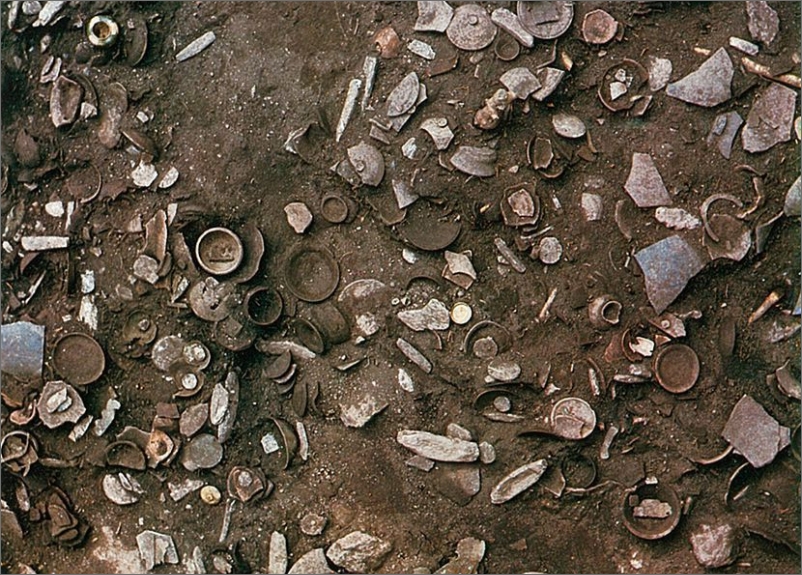
Ancient Ritualson Okinoshima
The sacred island of Okinoshima, situated between the Japanese archipelago and the Korean peninsula, has long attracted the devotion of the local population in the Munakata region, who possessed advanced nautical skills.
Large-scale rituals utilizing an enormous quantity of precious votive offerings were conducted on the island to pray for safe ocean voyages from the 4th to the 9th centuries, a period of more than 500 years during which overseas exchange occurred frequently in East Asia.
Ritual sites bearing witness to the successive phases of ancient rituals that chronicle the formation of indigenous beliefs in Japan have survived to the present almost intact because the island of Okinoshima, as an object of worship, has been protected by established taboos strictly limiting access to the island.
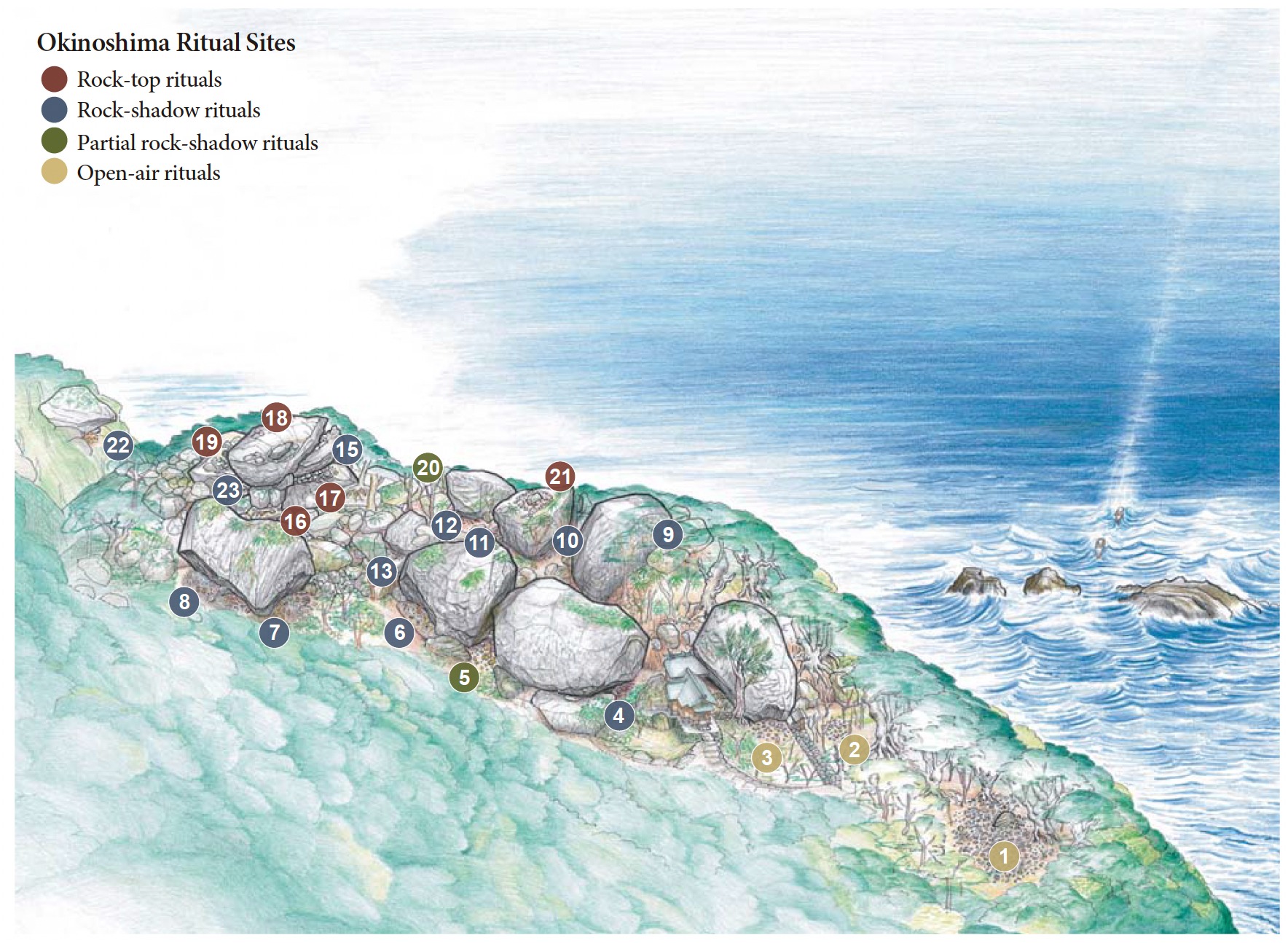
Rituals on the island were first conducted atop gigantic rocks, then in the shadows of these rocks, and finally in flat open-air parts of the island; in the process, faith in the Three Goddesses of Munakata began to take shape.
Approximately 80,000 votive offerings including precious objects from abroad have been collectively designated as national treasures of Japan, further illuminating how these rituals underwent changes, and the nature of overseas exchange at that time.
Rock-top Ritual Sites
Rituals were first performed atop these rocks in the late 4th century, when
overseas exchanges were occurring frequently.
Offerings were arranged neatly in small spaces between them and covered withstones.
These artifacts are similar to many burial objects found in mounded tombs dating to that
period, including bronze mirrors, iron swords and other weapons, and comma-shaped beads.
The combination of mirrors, swords, and beads (also called "jewels"), which constitute the
imperial regalia of Japanese mythology, characterize ritual offerings spanning several
centuries.
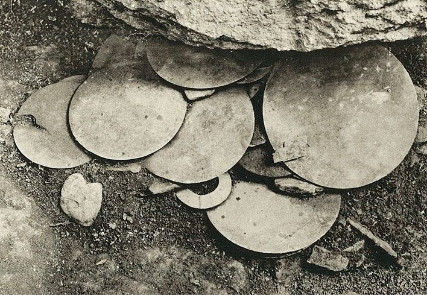
By the middle of the 5th century an altar appeared set atop a rock, with a
large stone in its center, surrounded by pebbles arranged in a square conguration.
Offerings of flat iron ingots that the Yamato court procured from the Korean peninsula also
reflect the importance of iron in Japan at that time.
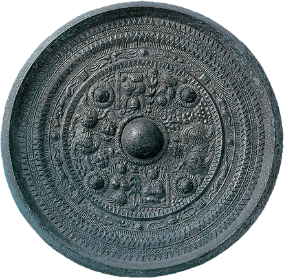
From the second half of the 5th century onward, rituals were performed in
the shadows of rocks. Offerings from this period include iron weapons, miniature knives and
axes, and highly ornamented gilt-bronze harnesses from the Korean peninsula.
A gold ring that bears a striking resemblance to those found in the royal Silla tombs and
shards of Persian glass presumably brought to Japan by way of the distant Silk Road are
important pieces of evidence for the active exchanges that were taking place at this time.
Those who engaged in dangerous ocean voyages offered these treasures to the gods.
Rock-shadow Ritual Sites
From the second half of the 5th century onward, rituals were performed in the shadows of rocks. Offerings from this period include iron weapons, miniature knives and axes, and highly ornamented gilt-bronze harnesses from the Korean peninsula.
A gold ring that bears a striking resemblance to those found in the royal Silla tombs and shards of Persian glass presumably brought to Japan by way of the distant Silk Road are important pieces of evidence for the active exchanges that were taking place at this time.
Those who engaged in dangerous ocean voyages offered these treasures to the gods.
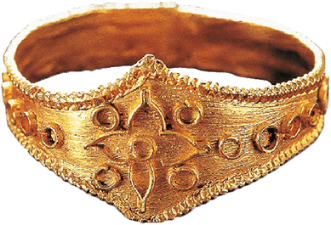
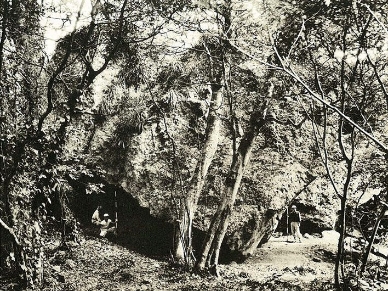
Partial rock-shadow Ritual Sites
In the period characterized by rituals performed in the shadows of rocks came to an end (Site 22) and partial rock-shadow rituals (Site 5), offerings shifted from items resembling burial objects found in mounded tombs to gilt-bronze miniature spinning and weaving tools, human figurines, and other objects that crafted especially for rituals.
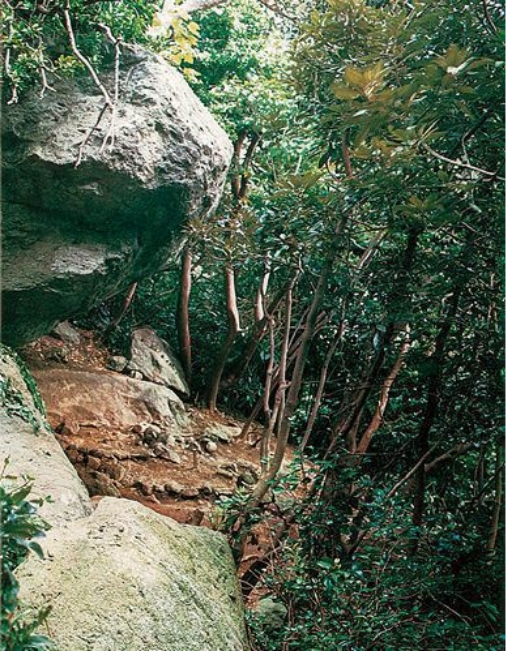
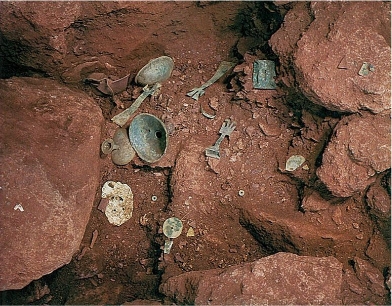
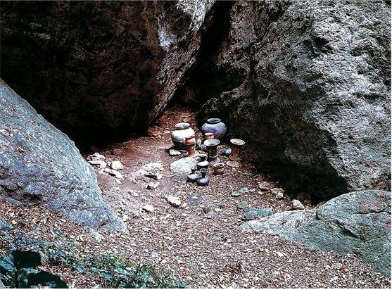
During this period the Sui unified the long-divided Chinese continent; the
Tang then replaced the Sui.
The Yamato court sent envoys to cultivate relations with the Sui and Tang rulers.
After the Tang and Silla toppled Baekje, which had long been allied with Yamato, however,
Yamato sent in troops and suffered a huge defeat by Tang-Silla allied forces in 663.
After the loss, Yamato accelerated its efforts to establish a centralized government modeled on
the Tang.
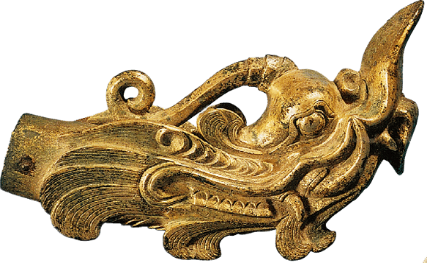
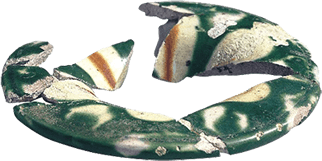
bottle-shaped vase with long neck
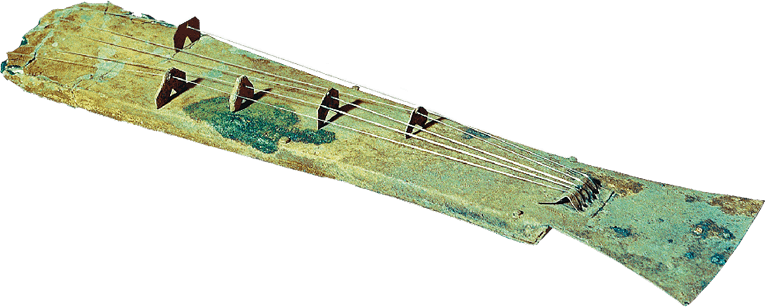
miniature pentachord
Rituals on Okinoshima appear to have changed with the times.
The ritual style that emerged in this period became the basis of indigenous Japanese ritual
practices that still survive today.
These gilt-bronze artifacts resemble the divine treasures still in use today at Ise Shrine.
Written records of ancient rituals in Japan appear only from the 8th century onward, so the
ritual sites on Okinoshima are an essential source of information about the formative stages of
indigenous faith in Japan.
Open-air Ritual Sites

steatite object
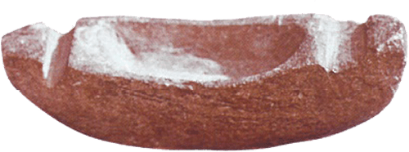
steatite object
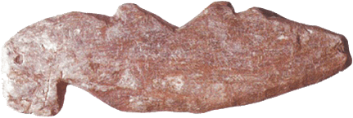
steatite object
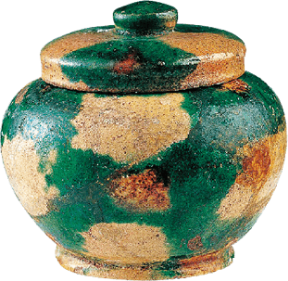
tricolored small jar
In the 8th century rituals were first performed in flat, open areas, some
distance away from the group of rocks where they had been conducted unil that time.
Many votive offerings were deposited around the remains of a stone altar with a large rock at
its center.
Offerings consisted mainly of a wide variety of pottery, including objects perforated with
holes and steatite objects in the shapes of people, horses, and ships.
While these offerings share some common features with those associated with
the new ritual style that prevailed at that time in Japan, some ritual objects are characterized
by shapes and materials unique to the Munakata region.
Rituals with a local flavor were performed within the new framework of the state.
